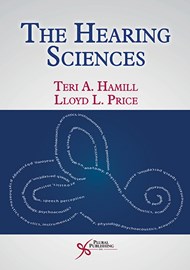This book proved to be a very interesting read. Aimed at undergraduate students, I feel that it delivers the key concepts of the hearing sciences in a straightforward manner for this audience.
The text covers all aspects of hearing sciences, and also provides a brief but informative overview of the more specialist systems and technology used within a clinical setting. The book is a good basis for undergraduates to explore the topics raised, but a more experienced reader may find the text too simplistic.
I found myself puzzled by the format of the book. I feel that it would have flowed much better if it had opened with a basic introduction to anatomy and physiology of the ear, rather than confronting the reader with a fairly in-depth mathematical and physical explanation of properties of sound, while only hinting at the anatomy and physiology of the systems throughout the first section.
Having said that, the individual chapters were well organised and easy to follow. The book is filled with concise summaries of key topics and is well supported by clear diagrams. The authors highlight key words and add practical advice with ‘clinical correlates’ to show how the concepts can be used with real patients in a real clinic.
Overall, a helpful and informative book, even though it is not presented in the most logical of orders. I doubt that many students would sit down to read this book from cover-to-cover, in which case, it covers the essentials brilliantly. I think this text is good to have on the department bookshelf, or to access from the library. The Hearing Sciences – Second Edition, is very good value for an audiology textbook, but I feel that it is a little too simplistic to invest in without checking the content first.




